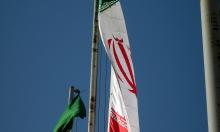Pakistan: Where the International Community Got It Wrong
The people of Pakistan have been left to rot by the international community. The scale of the flood disaster has either been wholly misunderstood or else there are forces at play which wish to take advantage of a destabilized Pakistan; the pitifully weak response by the international community moves this country and the region nearer to the abyss of chaos.

This week UN Secretary-General Ban Ki-moon told the UN General Assembly “Make no mistake: this is a global disaster, a global challenge. It is one of the greatest tests of global solidarity in our times”.
Putting the catastrophe into context
Putting the August floods catastrophe into scale, Ban Ki-moon called the situation a “slow-motion tsunami” as the flood waters sweep out of the area affected down to the south, affecting an area as large as Italy or England and between 15 to 20 million people – more than the Indian ocean tsunami, the Kashmir and Haiti earthquakes combined. 160,000 square kilometres of land are flooded – an area larger than half the countries in the international community. Six million people are in need of emergency assistance as a result of the floods.
What happened?
Massive monsoons swelled the Indus River to 40 times its normal volume, all the rivers in the north-east of the country sent torrents of water flooding a third of the country. Cities of up to a quarter of a million people have had to be evacuated, thousands of smaller towns and villages have been wiped off the face of the map.
By Friday, there are 143,870 reported cases of skin infection, 115,922 cases of acute diarrhoea and 113,981 cases of respiratory tract infections. 1,600 people have died (pending further statistics). Thousands of homes have been lost, three million people are homeless, huge tracts of farmland have been rendered useless.
200 health facilities have been damaged or destroyed, thousands of acres of crops due to be harvested have been washed away. Roads, bridges, railways, telecommunications, power lines no longer exist. Many of those affected cannot reach the healthcare facilities which are operating because there is no possibility of transportation. Water resources in many areas have been devastated, 2,000 schools have been washed away, seriously affecting the school year for hundreds of thousands of children. The initial cost of the damage has been estimated at 3.5 billion USD, including one billion USD-worth of crops.
The danger
Given the pitiful response from the international community (see below), the immediate consequence is that a second wave of disease will hit an already weakened population and healthcare sector. Yet this is the tip of the iceberg.
Forty-five per cent of Pakistan’s workforce is engaged in agriculture, therefore given the massive scale of the catastrophe, the economic spill-over is set to be vast. Food insecurity will hit millions of people on an endemic scale; a large part of Pakistan’s rice crop, along with sugar cane and cotton, has disappeared, bringing other problems downstream such as a partial paralyzation of the textile industry. This, in a country already fraught with economic problems, coupled with high unemployment, high fuel prices, a high degree of corruption, power outages and a growing insurgency movement with links to Al Qaeda.
In short, the conditions exist for the State to collapse and for Pakistan to implode.
Pathetic response from the international community
Three trillion dollars were found from one moment to the next to bail out the banks. For Pakistan, only 227.8 million USD has been forthcoming, less than half of the initial budget needed to fund the Pakistan Initial Floods Emergency Response Plan.
Despite being described by Ali Treki, Pakistan’s President of the National Assembly, as an “unprecedented humanitarian disaster” and “an extraordinary emergency situation” only a fraction of what needs to be done has been achieved. The Pakistani government has responded by diverting funds from its development budget but this is like a drop in the ocean.
According to Tammy Hasselfeldt, Chair of the Pakistan Humanitarian Forum, “The international response to the disaster has been too small to even begin to effectively address the needs of the survivors”.
As the much-needed long-term financing from development projects is diverted to short-term relief efforts, as the prospect of hikes in food prices looms and as unemployment is set to rise further, today, Islamist-backed charities are taking advantage of the situation.
Who knows what the consequences will be tomorrow? True, a divided Pakistan would be easier to rule under the old precept divide et impera and a controlled Pakistan/Central Asia would control access by PR China to resources in the future. However, the weak response by the international community can only be manipulated by forces which have an agenda and times of crisis provide excellent tinder for the fires of extremism.
Once again, the international community has misread the situation.
Timothy BANCROFT-HINCHEY
PRAVDA.Ru
Subscribe to Pravda.Ru Telegram channel, Facebook, RSS!





